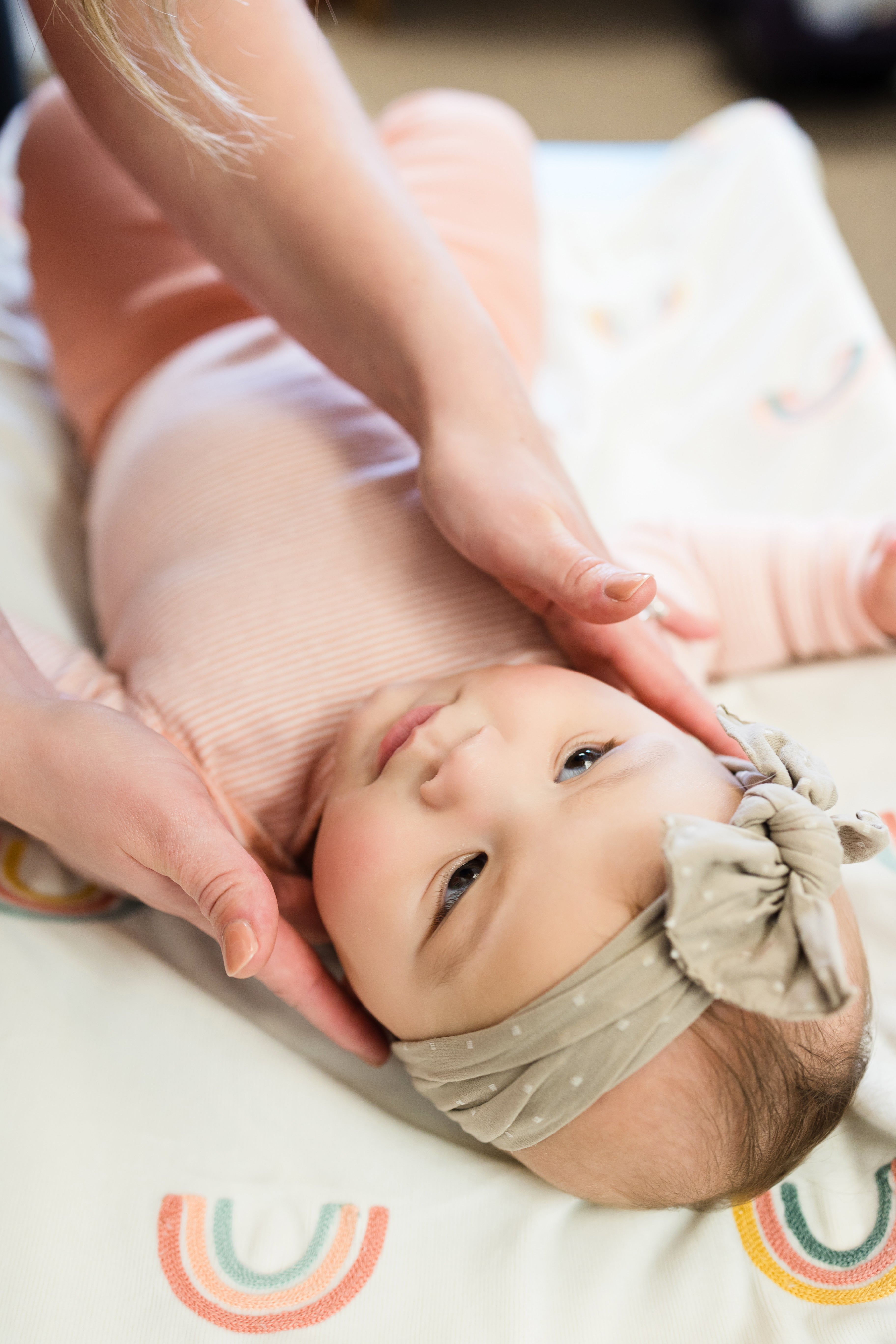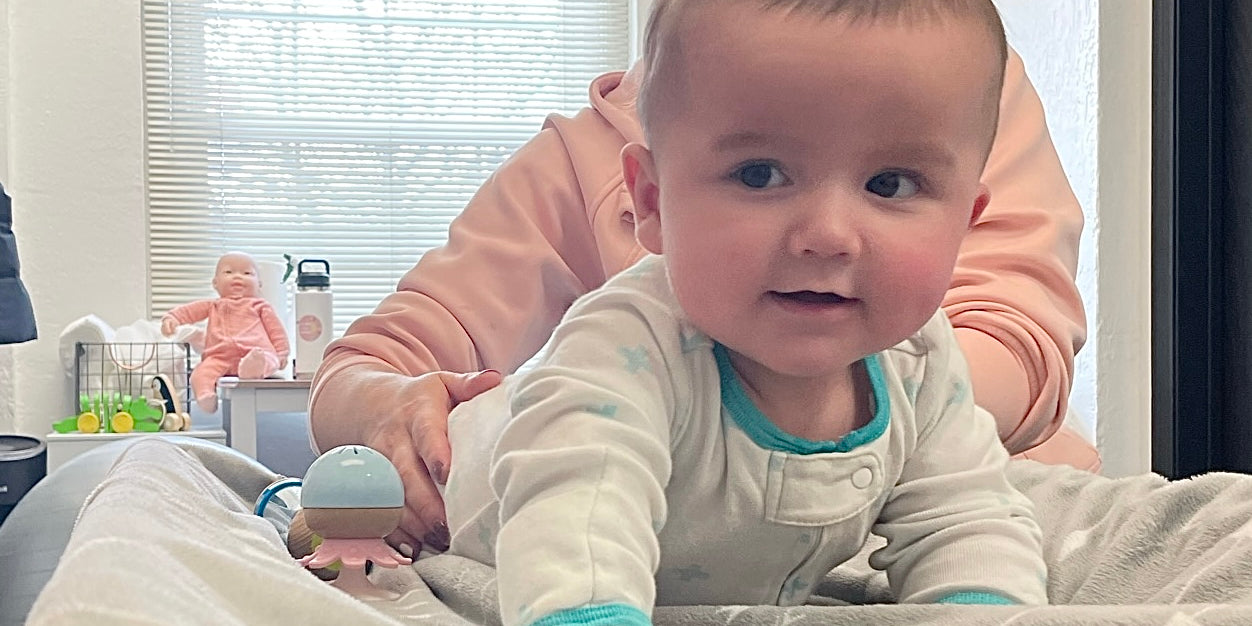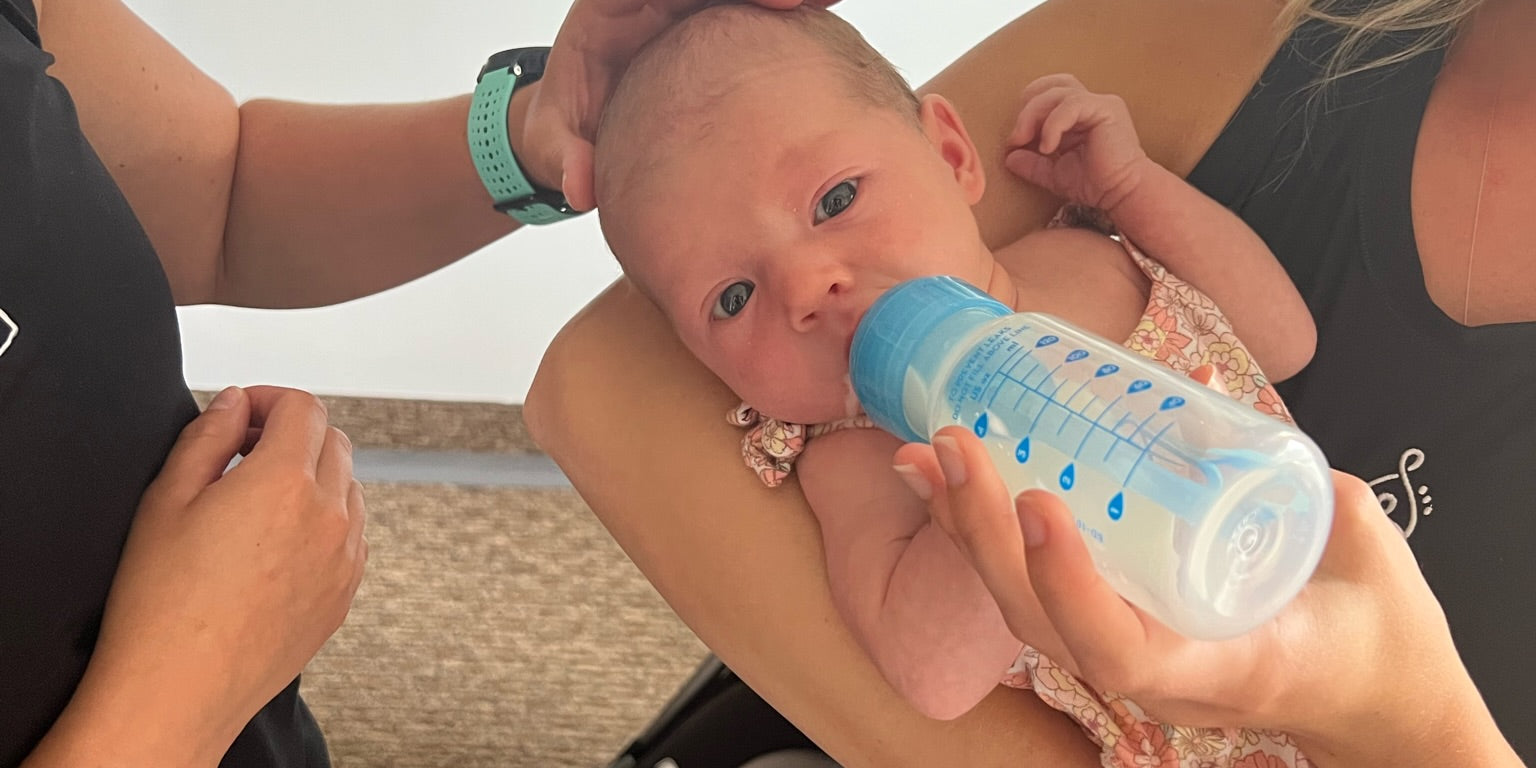What is CST?
CST [Craniosacral Therapy] is a gentle technique that has a relaxing effect on babies. This therapy works on the craniosacral system which includes your cerebrospinal fluid, brain, spinal cord & the tissues that surround your nervous system. CST uses light touch, about 5 grams of pressure, on the skull and the sacrum [tailbone]. The goal of infant craniosacral therapy is to reduce tension along the spine and relax its surrounding fascia. Fascia, if you didn't know, is like saran wrap around muscles, organs, and nerves in the body; it helps to keep everything locked in place. When a practitioner utilizes CST, they evaluate the movement and pulsations of the cerebral spinal fluid & fascia. Wherever there is tension or excessive restriction, CST is used for creating a more balanced system.
Infant craniosacral therapy can be beneficial for many baby issues, since it affects the entire nervous system. Craniosacral therapy for babies can be helpful when it comes to nursing and latching, gassiness, torticollis, and more.
PRO TIP : In conjunction with a chiropractic adjustment, CST can help newborns prepare and recover for oral restriction releases!
What Conditions can Benefit from Craniosacral Therapy for Babies?
- Plagiocephaly :: irregular head shape
- Torticollis :: one-sided neck tightness
- Breastfeeding & Latch issues
- Sleeping Disturbances
- Motor Coordination
- Tongue + Lip Ties :: can be used as a solo treatment OR in conjunction with an oral release
- Acid Reflux
- Colic
Craniosacral Therapy for Tongue Ties
As we mentioned, craniosacral therapy helps relieve tension in the body's fascia. Fascia is everywhere in the body, covering all the organs, muscles, and tissues. It also interconnects muscles and organs, so tension can translate to other parts of the body. Tongue ties are fascia! This specific fascia connects from the tongue all the way to the toes! Because of this, craniosacral therapy is great for tongue ties, before and after frenectomy's. It's also beneficial for other latch or breastfeeding difficulties. If you're looking for more tongue tie support, learn our Oral Stretches for Tongue Ties.
Craniosacral Therapy for Plagiocephaly/Flat Spots
One of the most common conditions we treat using craniosacral therapy is plagiocephaly or flat spots on the skull. During the birth process, the cranial bones overlap. Within the first month of life, we like to see the cranial bones return to their proper position to create a nice rounded head shape. Infant craniosacral therapy assists this process and reduces the likelihood of developing a flat spot [plagiocephaly]. If a flat spot is developing, CST can help reduce tension in the skull and neck. As pediatric chiropractors, we can also help with repositioning techniques, neck mobility, and tummy time alternatives!



